|
|
New Zealand Trout Flies
|
|
Hare & Copper
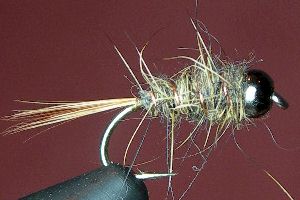
|
|
|
|
|
Fly Tying Details; |
|
|
Name: |
Hare & Copper |
|
|
Sizes: |
10 - 16 |
|
|
Hook: |
Kamasan B175 or Tiemco 3769 (these are both short,
strong Nymph hooks |
|
|
Thread: |
Danville Pre Waxed Thread
6/0 Brown or Black |
|
|
Tail: |
Pheasant tail fibers or
Ginger Brown Hackle fibers |
|
|
Body: |
Hare Fur with plenty of guard hairs |
|
|
Ribbing: |
Copper wire - Medium |
|
|
Thorax |
Hare Fur with plenty of guard hairs |
|
|
Weight: |
Tungsten, Brass - Black,
Copper or Gold
and Lead wire |
|
|
Comment: |
Probably NZ's most
popular nymph and the first nymph most beginner
tiers will tackle. The Hare and Copper catches fish through out the
country in a variety of waters. The guard
hairs used in the mix represent legs and give the fly that buggy look
that's very effective. The standard pattern is tied without a bead,
with or without weight depending on the fishing situation. All sizes
catch fish. I tie these
on shorter hooks because there is more hook in relation to the fly size,
giving better hook ups. |
|
|
|
|
|
Step by Step Tying Instructions:
Hare & Copper |
|
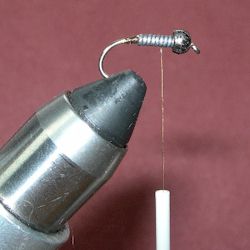
This is an easy and
effective fly to tie.
Firstly choose the size bead you want for the
weight of the fly, pictured is a #10 hook with a #3.8mm tungsten bead.
Apply glue to the hook shank then wrap the hook shank with lead wire
for additional weight. I've used .025 lead wire here. The length of
wire is important as it will help form the taper to shape the body of
the nymph.
Bind the lead with a layer of thread and apply more glue to hold all
firmly in place
|
|
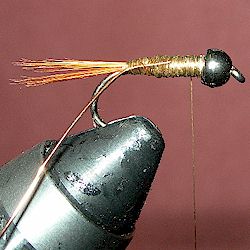
Next we
tie in the tail which is a clump of hackle fibers and
some copper wire. Taper the body as you wrap it with thread. |
|
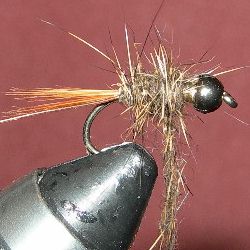 Next
step is to added the dubbing. It can be tricky to get the look you
want consistently, the key is to build the dubbing up slowly to shape
the nymph. Choose the colour mix that you want from a Hares pelt, and
added to that plenty of guard hairs. I use the ones
from the center of the hares back, these have dark bottoms. Mix
together well then apply dubbing wax to your thread, the hare fur will
stick to this, apply it evenly then roll it between your fingers to
make a thin tube of dubbing. The tighter the tube the less hairy the
end result. Wind onto the nymph starting from the tail and winding
forward. Aim to build a cone shape taper forward to the head. Next
step is to added the dubbing. It can be tricky to get the look you
want consistently, the key is to build the dubbing up slowly to shape
the nymph. Choose the colour mix that you want from a Hares pelt, and
added to that plenty of guard hairs. I use the ones
from the center of the hares back, these have dark bottoms. Mix
together well then apply dubbing wax to your thread, the hare fur will
stick to this, apply it evenly then roll it between your fingers to
make a thin tube of dubbing. The tighter the tube the less hairy the
end result. Wind onto the nymph starting from the tail and winding
forward. Aim to build a cone shape taper forward to the head.
|
|
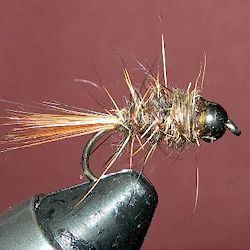
Then
wind the wire forward to the head, I
tend to wind it the opposite way to help hold all in place, then a
couple of winds behind the bead, pull tight, cut off and tie in. Whip
finish, glue and you are done
Ready to catch a fish
|